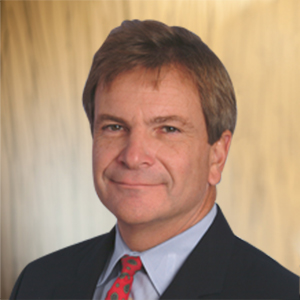Dr. Harwood’s Unique Approach to Joint Replacement Surgery

 Dr. David A. Harwood is a board certified orthopedic surgeon specializing in joint replacement. He practices at University Orthopaedic Associates, and also serves as a faculty member at Rutgers Robert Wood Johnson Medical School where he instructs the joint replacement residents. Dr. Harwood is among the elite joint replacement surgeons both locally and nationally, and is certified to perform the most up to date, innovative surgeries. We spoke to Dr. Harwood to learn more about his philosophy of medicine and what makes his approach to joint replacement so unique.
Dr. David A. Harwood is a board certified orthopedic surgeon specializing in joint replacement. He practices at University Orthopaedic Associates, and also serves as a faculty member at Rutgers Robert Wood Johnson Medical School where he instructs the joint replacement residents. Dr. Harwood is among the elite joint replacement surgeons both locally and nationally, and is certified to perform the most up to date, innovative surgeries. We spoke to Dr. Harwood to learn more about his philosophy of medicine and what makes his approach to joint replacement so unique.
What is your approach to joint replacement surgery?
As a surgeon, my priority is helping the patient. I believe in helping in the least invasive, safest way- choosing the approach with the most functional outcome for the patient. There are different approaches when it comes to joint replacement and many times a surgeon will become reliant on a specific technique because that is what they feel most comfortable with, as opposed to using the approach that is best for that patient’s case. I am comfortable in all of the different techniques and not pigeonholed in what surgeries I can perform. I evaluate the patient as an individual and will suggest the best option for them, not the best option for me. This patient-centric approach has guided me through my entire career as an orthopedic surgeon. The combination of putting the patient first and keeping my breadth of knowledge wide is at the essence of my medical philosophy.
How has joint replacement surgery changed over time?
Throughout my twenty-four plus year career innovations in medical approaches have always been changing. In the past three or four years, however, the number of technological advances in orthopedic surgery has sharply increased. The new technology allows surgeons to operate less invasively using smaller incisions, and empowers patients to recover faster. There are also new medical devices being designed specifically for joint replacement procedures that permit surgeons like myself to leave more of the natural parts of the body in place while repairing or replacing only the damaged areas.
How do you stay at the forefront of these surgical innovations?
It is very important to me to keep up to speed with all of the breakthroughs that make surgery and the healing process easier for patients. If there is a new technique that I feel will benefit my patients I make it a point to become trained and efficient in that approach. For example, the anterior approach hip replacement is a great new minimally invasive procedure and while the incisions were smaller, they were still visible. At the Schulthess Klinik in Zurich they were performing this procedure but used the “bikini line” incision, which is made along the Langer’s lines where the body is less prone to obvious scarring and hidden by undergarments. In June I went to Switzerland so I could become proficient in this technique, and now offer it to my patients. I recognized that patients often view postoperative scarring as a negative and knew there was another option that I could offer them.
Other procedures that I am one of the only surgeons in New Jersey performing include the Birmingham hip resurfacing and the bi-cruciate sparing total knee replacement. There may not be as many patients that have a need for these procedures, but when they are a good fit I want to make sure that I provide them the best possible option for their specific cases.
You are now offering same-day joint replacement surgery. What are some of the innovations that have allowed that to become a reality?
Being able to offer same-day joint replacement surgery to my patients has really been a substantial advancement. Patients can now go home after the procedure as opposed to having an overnight hospital stay or being transferred to an inpatient rehabilitation facility. Advances in surgical techniques have played a large role in allowing this to happen. For example, the anterior hip replacement procedure is advantageous for patients because of its minimally invasive nature. This technique approaches the hip through the front, as opposed to the side or back. The incision is made using a muscle splitting approach, which exposes the hip through a natural interval of muscles, as opposed to needing to be cut. This muscle preservation is what makes the procedure minimally invasive and what enables a shorter hospital stay and faster recovery period. Though some patients need to be hospitalized for the surgery, those who qualify can have the procedure performed at our outpatient surgery center, University Center for Ambulatory Surgery.
While many people are candidates for the anterior hip replacement, there are some situations where the patient would be better with the posterior approach but wanted to give them the same benefits of it being minimally invasive and easier recovery. One of the traditional downfalls to the using the posterior approach is the aftercare precautions that needed to be used such as using an elevated toilet seat, only sleeping on their back, or needing help getting out of the car. I adjusted this procedure to use similar techniques as the anterior hip replacement and approach the incision to have minimal impact on the surrounding tissues. This permits faster healing and a strong hip joint, as though there was never even an incision. With these adjustments I was still able to offer patients the posterior approach if it was truly a better fit for them, while still giving the additional benefits of the anterior approach.
How has being chief of joint replacement residents at Rutgers Robert Wood Johnson influenced your surgical career?
While I have been performing joint replacement surgery for over 24 years, I am also responsible for teaching the next generation of orthopedic surgeons. This motivates me to not become complacent with the traditional methods and always stay up-to-date with the latest techniques. My passion for teaching motivates me to always stay current and my experience allows me to effectively evaluate the benefits and efficacy of new techniques. Maintaining a scientific curiosity with the well being of my patients being most important is what makes my individual approach to joint replacement unique.

